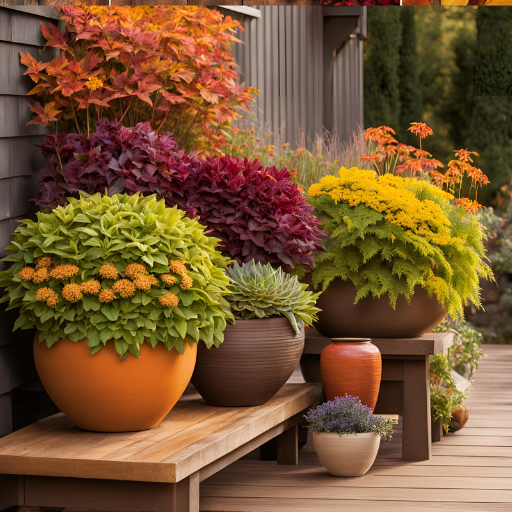Fall Container Gardens; As the air turns crisp and the leaves start to change color, fall offers a beautiful opportunity to refresh your outdoor spaces. Container gardening is a fantastic way to enhance your home’s curb appeal and enjoy the season’s vibrant hues. In this article, we’ll explore the twelve best container plants for fall, providing you with everything you need to create a stunning autumn display.
12 Best Fall Container Plants
1. Chrysanthemums (Mums)
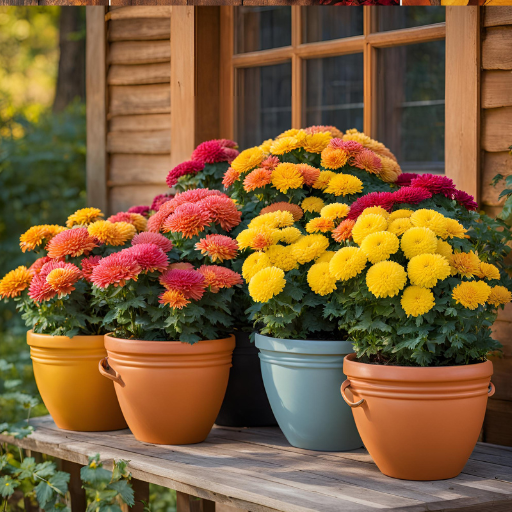
Chrysanthemums, or mums, are a classic fall favorite. They come in a range of vibrant colors, including orange, yellow, and purple. Mums thrive in full sun and require regular watering to keep their blooms healthy and vibrant.
Chrysanthemums are a staple in fall gardening, celebrated for their wide range of colors like deep reds, oranges, purples, and sunny yellows. These blooms offer vibrant visual impact and are often associated with the season’s festive atmosphere. Mums thrive in full sun and require consistent watering, especially during dry spells, to maintain their lush appearance. They’re ideal for containers placed on porches, patios, or by front doors where they can be fully appreciated. Choose compact varieties for a tidy, controlled display in pots.
When planting mums in containers, ensure good drainage to prevent root rot. Pair them with complementary foliage or trailing plants like ivy for a fuller look. Deadheading spent blooms will encourage continued flowering throughout the season. Mums can be treated as annuals or overwintered indoors if you wish to reuse them next year. Their structured form and bold hues make them a dynamic addition to any fall-themed container.
2. Pansies
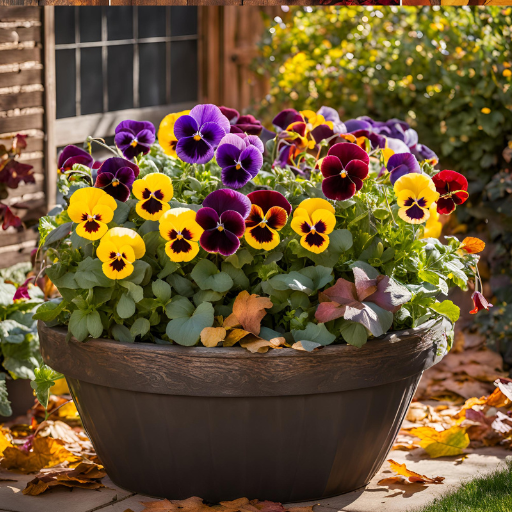
Pansies are known for their cheerful, colorful faces and are excellent for fall gardens. They can tolerate cool temperatures and often bloom until the first frost. Plant them in well-draining soil with plenty of sunlight for the best results.
Pansies offer cheerful, expressive blooms that are perfect for brightening up cooler fall days. Their resilience to frost and chilly temperatures makes them ideal candidates for autumn containers. Available in a multitude of colors and bi-colored patterns, they provide endless options for creative combinations. These flowers prefer well-drained soil and regular watering, particularly in sunny locations. Pansies can be planted in clusters for a lush effect or used to edge container arrangements.
They’re especially effective when paired with ornamental cabbages or creeping foliage, providing a vibrant contrast. Since pansies can bloom into winter in milder climates, they extend seasonal interest far beyond other annuals. Make sure they receive adequate sun exposure—ideally, six hours a day. Deadhead regularly to keep the blooms coming. Their compact size makes them versatile for everything from window boxes to tabletop pots.
3. Ornamental Kale and Cabbage
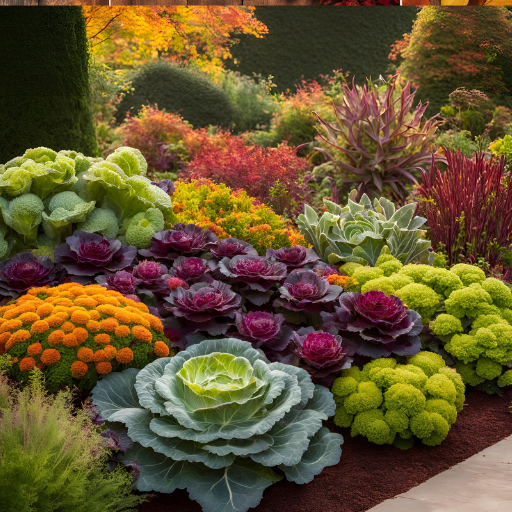
With their striking colors and textures, ornamental kale and cabbage make eye-catching additions to fall containers. They are hardy and can withstand cold temperatures, making them perfect for late-season gardening. Plant them in well-draining soil and provide adequate sunlight.
Ornamental kale and cabbage bring rich texture and dramatic foliage to fall arrangements. Their rosettes of ruffled leaves come in shades of purple, white, and green, adding a sculptural quality to containers. These plants are not only visually appealing but also cold-tolerant, often looking their best after the first frost. They require full sun and consistent moisture to thrive, though they’re relatively low maintenance overall. Use them as focal points in your container arrangements for bold impact.
When designing with ornamental kale and cabbage, think in terms of height and symmetry. They can be surrounded by lower-growing flowers like pansies or trailing vines for balance. While they’re not typically grown for consumption, they are non-toxic and safe around pets and children. These plants remain attractive late into the season, even when other flowers begin to fade. Their robust, leafy forms provide a refreshing contrast to traditional floral elements.
4. Asters
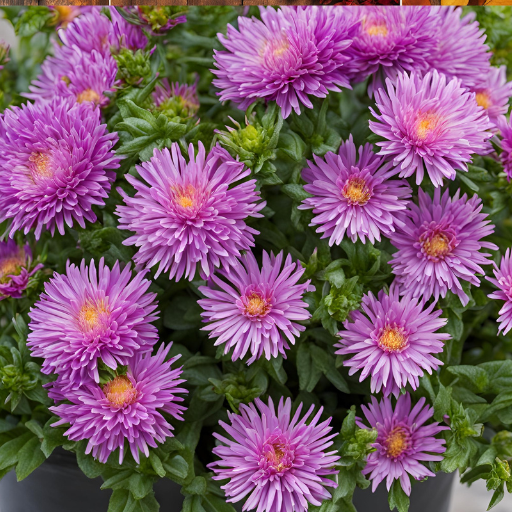
Asters add a splash of color to your fall garden with their late-season blooms. These perennial plants attract pollinators and thrive in full sun. They prefer well-draining soil and can tolerate drought once established.
Asters are perennial favorites for fall, offering daisy-like blooms in shades of purple, pink, and white. These late bloomers provide a valuable nectar source for pollinators like bees and butterflies. Asters thrive in sunny locations and well-draining soil, making them excellent candidates for container gardening. They can grow tall, so consider using them as the vertical element in your container design. Compact varieties are available if space is limited.
When planting asters, ensure your containers are deep enough to support their root systems. They pair well with trailing plants or ground-huggers to add fullness at the base. Asters require moderate watering—avoid soggy soil to prevent root disease. Deadheading spent flowers encourages additional blooming and a tidier appearance. Their vivid color and ecological benefits make asters a smart and stylish fall choice.
5. Sedum (Stonecrop)
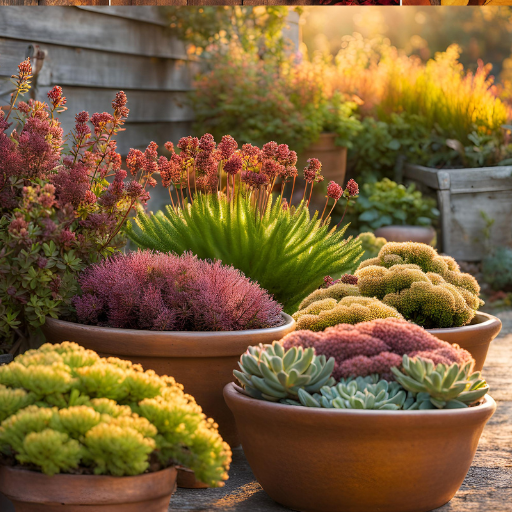
Sedum is a hardy, drought-resistant plant that’s perfect for container gardening. With its unique foliage and small star-shaped flowers, it adds interest to any arrangement. Place sedum in a sunny spot and allow the soil to dry out between watering.
Sedum is a rugged, drought-tolerant succulent that brings beauty and resilience to fall containers. With star-shaped blooms and fleshy leaves, it adds both texture and visual interest to any arrangement. Sedum thrives in full sun and well-drained soil, needing minimal maintenance to flourish. The plant’s colors often intensify in cooler weather, making it especially vibrant in the fall. Use it as a filler or border plant in your container designs.
Sedum pairs well with ornamental grasses or other succulents for a contemporary look. Because of its tolerance for poor soil and irregular watering, it’s ideal for busy gardeners. Over time, sedum can spill attractively over the edges of pots, softening hard container lines. Trim lightly if it becomes too leggy or sprawling. This plant adds structure and contrast, balancing more traditional floral elements beautifully.
6. Heuchera (Coral Bells)
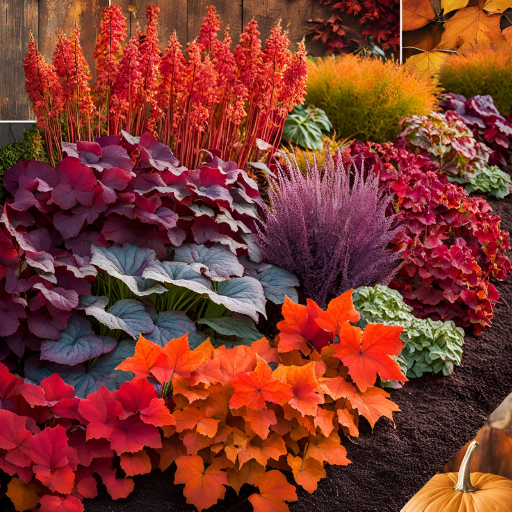
Heuchera, or coral bells, are known for their stunning foliage, which can range from deep purple to bright green. They thrive in partial shade and are relatively low-maintenance. Ensure they have well-draining soil for optimal growth.
Heuchera, commonly known as coral bells, is admired for its striking foliage rather than flowers. The leaves come in a variety of rich shades—burgundy, bronze, lime green, and even silver—making it a versatile plant for autumn containers. These low-maintenance perennials thrive in partial shade and tolerate cooler temperatures well. Heuchera prefers well-draining soil and benefits from regular watering, especially during dry spells. They offer long-lasting color when many summer plants begin to fade.
Heuchera is particularly effective when paired with flowering plants like mums or pansies, adding a lush base of color. Some varieties also produce delicate flower spikes that add vertical interest. Their tidy, mounded shape works well in both small pots and large mixed containers. For extra flair, combine multiple Heuchera cultivars with contrasting leaf colors. Their foliage continues to shine well into winter in mild climates.
7. Fall-Flowering Perennials (e.g., Goldenrod)
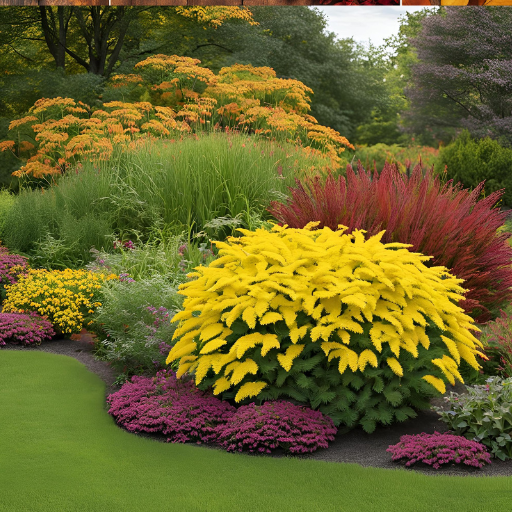
Fall-flowering perennials like goldenrod add vibrant color and attract pollinators. These plants are hardy and can survive cooler temperatures. Plant them in full sun and ensure they have enough space to grow.
Goldenrod is a vibrant fall-flowering perennial that brings warmth and energy to container gardens. Its plume-like golden blooms stand out against the season’s earthy tones, making it a standout choice for autumn. This hardy plant thrives in full sun and is relatively drought-tolerant once established. It also attracts pollinators, helping to support local ecosystems even late in the year. Use goldenrod as the height element in a container for bold vertical drama.
When planting goldenrod, provide well-drained soil and adequate space to accommodate its mature size. It pairs beautifully with trailing plants or mounding flowers like asters or pansies. Despite its bold presence, goldenrod is surprisingly easy to care for and resistant to pests and diseases. Regular deadheading will prolong blooming and maintain a neat appearance. This perennial adds a wild, natural touch that enriches any fall container display.
8. Creeping Jenny
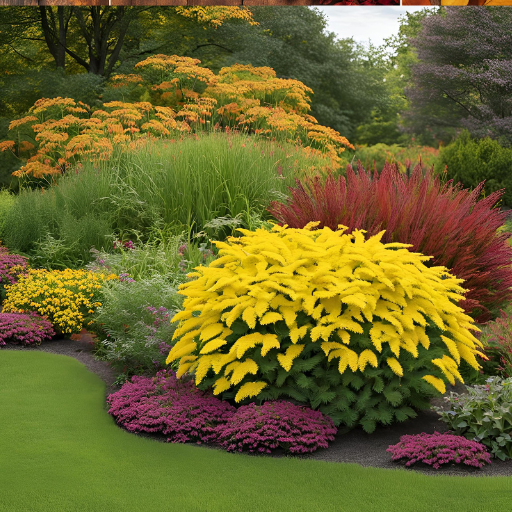
Creeping Jenny is a low-growing plant with bright yellow-green foliage that cascades beautifully over container edges. It thrives in partial shade and is relatively low-maintenance. Water regularly to keep the soil moist.
Creeping Jenny is a trailing plant with vibrant chartreuse leaves that add a bright contrast to fall container arrangements. Its low-growing habit allows it to cascade beautifully over the edges of pots, softening their appearance and creating visual movement. Creeping Jenny thrives in partial shade and consistently moist soil, though it can adapt to full sun in cooler climates. It is especially effective when paired with upright plants like ornamental grasses or mums. The bold yellow-green foliage remains eye-catching even as other plants begin to fade.
This plant is relatively low-maintenance and can be easily trimmed to maintain shape. In fall arrangements, it acts as the “spiller” component in the thriller-filler-spiller container design approach. Creeping Jenny’s foliage remains attractive until the first hard frost, making it a long-lasting seasonal choice. It also transitions well into winter displays when paired with evergreens or pinecones. The foliage alone is enough to add a pop of unexpected brightness to your fall décor.
9. Sweet Potato Vine
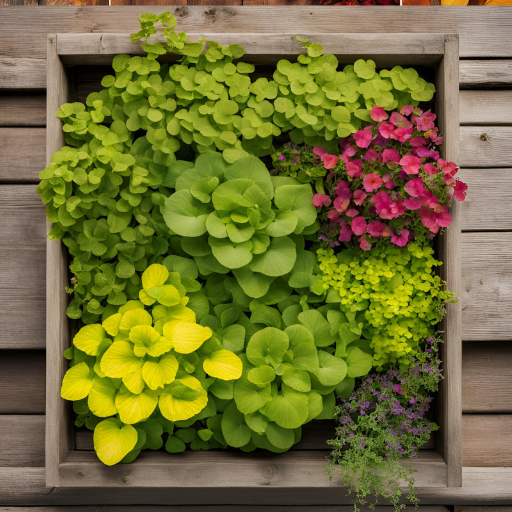
Sweet potato vine is loved for its stunning, lush foliage, which can be a striking contrast in any container. This plant prefers full sun and can grow quickly. Ensure it has enough water and well-draining soil.
Sweet potato vine is loved for its bold, fast-growing foliage that comes in shades of deep purple, bronze, or lime green. This trailing plant brings dramatic flair to fall containers and works especially well alongside flowering perennials and ornamental vegetables. It prefers full sun but can tolerate partial shade, and it thrives in well-drained soil with consistent watering. The leaves provide a lush, tropical look that contrasts beautifully with traditional autumn tones. Sweet potato vine grows quickly, so regular pruning may be needed to keep it in check.
Although not grown for its tubers in containers, the ornamental variety is valued purely for its foliage. It works well as the “spiller” in arrangements, trailing down the sides of urns or baskets. Pair it with upright plants like goldenrod or kale to balance out its spreading nature. Keep the soil moist but not soggy to prevent root rot. With its rich color and graceful trailing habit, sweet potato vine adds a modern edge to classic fall displays.
10. Hardy Mums
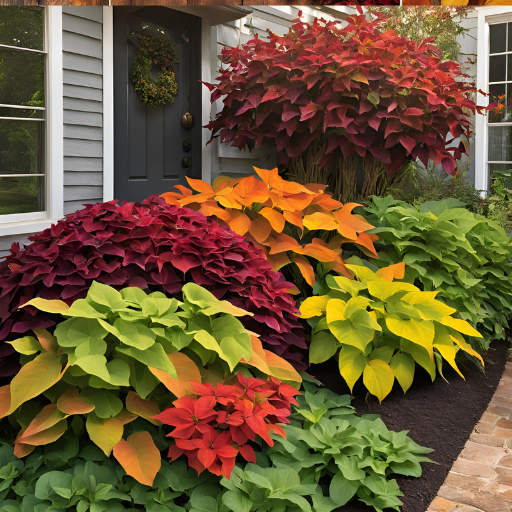
Hardy varieties of mums can survive cooler temperatures and are perfect for fall container displays. They require full sun and regular watering, making them an excellent choice for long-lasting blooms throughout the season.
Hardy mums are a reliable choice for fall containers, delivering bright, long-lasting blooms that can withstand chilly temperatures. Unlike traditional florist mums, hardy varieties can often be overwintered and come back in the spring. These plants prefer full sun and well-draining soil, along with regular watering to maintain continuous blooming. Hardy mums are available in a range of autumnal shades like orange, rust, and burgundy. Their tight, mounded shape gives containers a neat, symmetrical appearance.
Hardy mums make excellent focal points in pots, especially when combined with trailing foliage or shorter flowering companions. Pinching them back in late summer encourages a fuller bloom display in fall. They also hold up well through light frosts, extending the life of your seasonal arrangement. Choose different bloom shapes—such as daisy or pompon styles—for added texture. Hardy mums are an essential anchor plant for any fall-themed container.
11. Aloe Vera
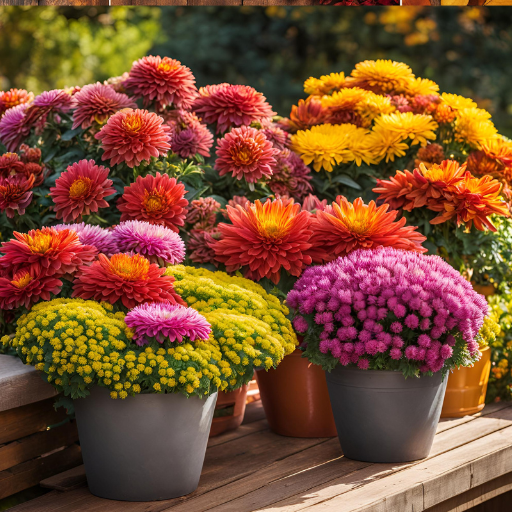
Aloe vera, known for its unique appearance and medicinal properties, can also thrive in containers during the fall. It prefers bright, indirect sunlight and requires minimal watering. Ensure the soil is well-draining to prevent root rot.
Aloe vera is a surprising but effective choice for fall containers, offering unique architectural form and easy care. Its thick, spiky leaves bring a sculptural element that contrasts beautifully with soft foliage or flowering plants. Aloe prefers bright, indirect sunlight and minimal watering, making it an excellent low-maintenance option for busy gardeners. In fall, aloe can stay outdoors as long as temperatures remain above freezing. For colder regions, it’s easily moved indoors before the first frost.
In containers, aloe works well in minimalist arrangements or as an unexpected textural feature among classic fall plants. Its neutral green color pairs nicely with warm-toned blooms and bold foliage. Ensure excellent drainage to prevent root rot, as aloe does not tolerate soggy soil. Consider mixing it with other drought-tolerant plants like sedum for a cohesive, water-wise design. Aloe also offers the bonus of being a medicinal plant—just break a leaf for soothing gel when needed.
12. Evergreen Shrubs

Evergreen shrubs add year-round interest to your garden. Varieties like dwarf holly or boxwood work well in containers and can survive the cooler months. They require full sun and moderate watering to stay healthy.
Evergreen shrubs like dwarf boxwood or compact holly offer structure and year-round interest in container gardens. Their tidy shape and rich green foliage provide a beautiful backdrop to more colorful seasonal plants. These shrubs prefer full sun to partial shade and require consistent moisture, especially while establishing in containers. Because they’re slow-growing, they maintain their shape and size without frequent pruning. Evergreens are also cold-hardy, making them perfect for transitioning from fall into winter displays.
Use them as anchor plants in larger containers, surrounding them with fall flowers, trailing vines, or ornamental vegetables. Their longevity makes them a sustainable choice—you can decorate around them seasonally rather than replanting every few months. For extra appeal, choose variegated or berried varieties for added texture and color. Make sure your container is large enough to support root development and provide insulation from cold. Evergreen shrubs bring classic elegance and lasting value to your container gardening efforts.
Conclusion
Fall container gardening is a rewarding way to celebrate the season’s beauty. By choosing the right plants and providing them with proper care, you can create stunning displays that brighten your outdoor space.

